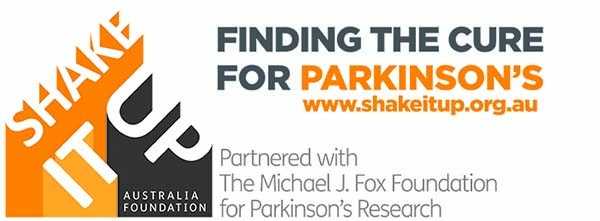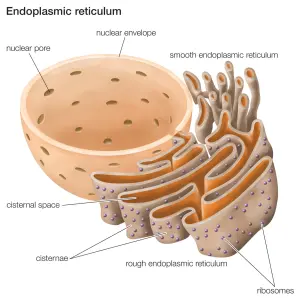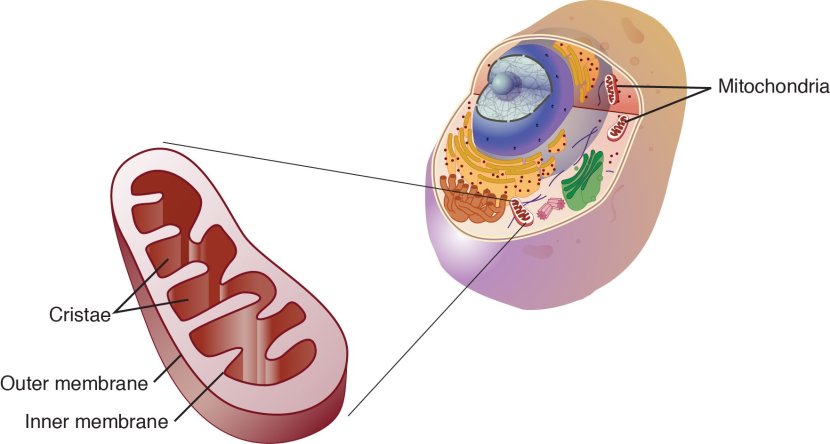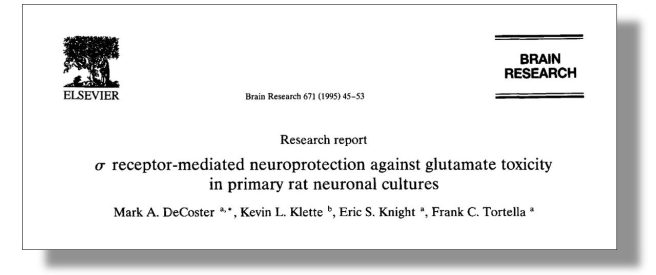|
# # # # An Australian charity seeking to find disease modifying therapies for Parkinson’s – The Shake It Up Australia Foundation – has announced a commitment to partially fund a clinical trial with a biotech firm called Anavex Life Sciences. The trial will focus on a drug called ANAVEX2-73 (also known as ‘blarcamesine’). This experimental treatment is a Sigma-1 receptor agonist In today’s post, we will discuss what the Sigma-1 receptor does, we will review some of the Parkinson’s research that has been conducted on this protein, and we will discuss what we know about the potential trial. # # # # |
 A man on a mission. Source: Goulburnpost
A man on a mission. Source: Goulburnpost
The gentleman in the photo above is named Clyde Campbell.
True blue Aussie, innovative robotics engineer, keen sportsman, and all round nice guy.
Clyde also has Parkinson’s, which was diagnosed in 2009 after he noticed a tremor in his left hand while holding notes at a business meeting. After dealing with the initial shock of this life changing event, he turned his attention to doing something about it.
Clyde simply could not sit still and not do anything about his situation, so he grabbed the bull by the horns and decided to shake things up. In 2011, Clyde (and his brother Greg) founded a charity called the Shake It Up Australia Foundation:
In 2011, Clyde (and his brother Greg) founded a charity called the Shake It Up Australia Foundation:
 Since its founding, the foundation has supported 38 Parkinson’s research projects across 12 institutes, with over AUS$11.5 million in funding. In addition, the organisation is a key partner in the Australian Parkinson’s Mission (Click here to read a previous SoPD post on this project).
Since its founding, the foundation has supported 38 Parkinson’s research projects across 12 institutes, with over AUS$11.5 million in funding. In addition, the organisation is a key partner in the Australian Parkinson’s Mission (Click here to read a previous SoPD post on this project).
To learn more about Clyde, watch this video where he shares his story:
This week the Shake It Up Australia Foundation made a big announcement.
What did they say?
They announced a commitment to co-fund a clinical trial with a biotech firm called Anavex Life Sciences (Click here to read the press release).
The Shake It Up Foundation (and its international partners) has “committed to invest into Anavex up to 50% of the costs of a disease modifying clinical study to develop ANAVEX2-73 for the disease modifying treatment of Parkinson’s”
What is ANAVEX2-73?
ANAVEX2-73 (also known as blarcamesine) is a Sigma-1 receptor agonist.
What does that mean?
An ‘agonist’ is a drug that binds to and activates a particular receptor.
Ok, but what is a receptor?
A receptor is a protein that act as switches for certain biological processes to be initiated. Receptors wait for a protein to come along and activate them or alternatively inhibit them. The activators are called agonists, while the inhibitors are antagonists.

Agonist vs antagonist. Source: Psychonautwiki
Cool. So ANAVEX2-73 activates a receptor. But what exactly is Sigma-1?
The Sigma-1 receptor is a multi-functional protein situated in endoplasmic reticulum membrane.
Que? What on Earth is the endoplasmic reticulum?!?
The endoplasmic reticulum (or ER) is a highly convoluted, netlike mesh structure that extends off the nucleus. It is the assembly line where proteins are produced within a cell.
 The endoplasmic reticulum. Source: Britannica
The endoplasmic reticulum. Source: Britannica
The nucleus is where the blue prints for making and maintaining an organism is kept in the form of DNA. A template of how to produce a particular protein can be generated from this DNA – that template is called RNA – and that is used to produce a protein (via a process called translation). A large part of that protein production process is conducted within the endoplasmic reticulum.
This video explains exactly what the ER does:
The Sigma-1 receptor is located in specific regions of the ER called the mitochondria-associated membrane. These are regions where mitochondria connect to the ER.
Mitochondria – you may recall from previous SoPD posts – are the power stations of each cell. They help to keep the lights on. Without them, the party is over and the cell dies.

Mitochondria and their location in the cell. Source: NCBI
The mitochondria-associated membranes are involved in transferring certain molecules from the ER to mitochondria. They also play an important role in regulating calcium homeostasis, mitochondrial function, autophagy and apoptosis (don’t worry about all of that for now).
So what does the Sigma-1 receptor do?
Normally, the Sigma1 receptor is kept in check by a protein called Binding immunoglobulin protein (or BIP; also known as GRP78). When activated, however, Sigma-1 is released from the controlling grip of BIP, freeing Sigma-1 to interact with other proteins and molecular pathways, many of which have neuroprotective properties.
 Source: Semanticscholar
Source: Semanticscholar
This freedom is importantly for Sigma-1 because it functions as a chaperone.
What is a chaperone?
A chaperone is a protein that assist the folding (or unfolding) of other proteins. It helps other proteins to assemble into the right shape to do their function.
One protein Sigma-1 is a chaperone for is inositol 1,4,5-trisphosphate receptor (lets just call it IP3R). Sigma-1 helps IP3R to facilitate the flow of calcium from the ER under stressful conditions. Increasing Sigma-1 in cells helps to counteract ER stress, while lowering Sigma-1 levels results in more stress and leads to cell death (Click here to read more about this).
The chaperone role of Sigma-1 is important when a cell comes under stress. During ER stress, misfolded proteins start to pile up and accumulate as the normal protein producing function of the ER is interupted. Activation of Sigma-1 aids in reversing this accumulation and restoring normal protein production (Click here to read more about this).
Sigma-1 can also activate the NF-κB-p65 pathway, resulting in increased levels of cellular antioxidants and decreased oxidative stress (Click here to read more about this).
In addition to all of these actions, Sigma-1 may also promote synaptic plasticity and neuronal survival via increased levels of relased BDNF (a neurotrophic factor, which promotes survival and growth of cells – click here to read more about this).
Given all of these functions, Sigma-1 is a really interesting target in Parkinson’s research.
|
# RECAP #1: The Shake It Up Australia Foundation (and partners) has committed to fund a clinical trial with a biotech firm called Anavex Life Sciences. The company has an experimental drug called ANAVEX2-73, which is designed to activate the Sigma-1 receptor in cells. When activated the Sigma-1 receptor is free to facilitate antioxidant, neurotrophic, and neuroprotective pathways that could be useful in conditions like Parkinson’s. # |
What Parkinson’s-related research has been conducted on the Sigma-1 receptor?
So back in the mid 1990s, this study was published:
 Title: Sigma receptor-mediated neuroprotection against glutamate toxicity in primary rat neuronal cultures.
Title: Sigma receptor-mediated neuroprotection against glutamate toxicity in primary rat neuronal cultures.
Authors: DeCoster MA, Klette KL, Knight ES, Tortella FC.
Journal: Brain Res. 1995 Feb 6;671(1):45-53.
PMID: 7728532
In this study, the researchers evaluated the neuroprotective properties of 7 molecules that have the ability to activate Sigma-1. All of them were protective when administered to neurons in cell culture that had been over stimulated (excitotoxicity) by a neurotransmitter called glutamate.
It was one of the first reports suggesting a neuroprotective role for Sigma-1.
And this neuroprotective effect of sigma-1 activation was quickly replicated in dopamine neurons (a population of cells that are badly affected in Parkinson’s) that had been grown in cell culture (Click here to read more about that research).
These cell culture results have been replicated numerous times, including in mouse models of Parkinson’s. For example, this recent report:
 Title: Development and characterization of an inducible Dicer conditional knockout mouse model of Parkinson’s disease: validation of the antiparkinsonian effects of a sigma-1 receptor agonist and dihydromyricetin.
Title: Development and characterization of an inducible Dicer conditional knockout mouse model of Parkinson’s disease: validation of the antiparkinsonian effects of a sigma-1 receptor agonist and dihydromyricetin.
Authors: Guo CH, Cao T, Zheng LT, Waddington JL, Zhen XC.
Journal: Acta Pharmacol Sin. 2020 Apr;41(4):499-507.
PMID: 32112040 (This report is OPEN ACCESS if you would like to read it)
In this study, the researchers used genetically engineered mice (called Dicer knockout mice) that gradually lose their dopamine neurons over time after being treated with a drug called tamoxifen.
The investigators treated these mice with a Sigma-1 receptor agonist called PRE-084 and observed not only a complete rescue of the dopamine neurons (as measured in number of TH-positive neurons), but also a significant reduction in inflammation in the brain (as measured in number of Iba-1-positive cells):
 Source: PMC
Source: PMC
And this neuroprotection may be associated with a restorative effect. Evidence supporting this idea was published in 2019:
 Title: Pridopidine Induces Functional Neurorestoration Via the Sigma-1 Receptor in a Mouse Model of Parkinson’s Disease.
Title: Pridopidine Induces Functional Neurorestoration Via the Sigma-1 Receptor in a Mouse Model of Parkinson’s Disease.
Authors: Francardo V, Geva M, Bez F, Denis Q, Steiner L, Hayden MR, Cenci MA.
Journal: Neurotherapeutics. 2019 Apr;16(2):465-479.
PMID: 30756361 (This report is OPEN ACCESS if you would like to read it)
In this study, the researchers took mice that had been injected with a neurotoxin in one side of their brain. The neurotoxin (called 6-OHDA) kills only dopamine neurons and has been used as a method of modelling Parkinson’s for a long time. The investigators treated these mice with either a sigma-1 agonist (called pridopidine) or a placebo treatment every day for 5 weeks. Two different doses of the agonist were tested (a high dose and a low dose).
The investigators reported that the low dose significantly improved behavioural deficits in the mice and exhibited increased dopamine fiber density in the striatum (in the image below dark staining represents the branches of dopamine neurons in a region of the mouse brain called the striatum – the more dopamine branches, the more dark staining. The top row represents an image of a section of the striatum for placebo treated (saline), low dose (Pridop 0.3), and high dose (Pridop 1) treated mice. The bottom row represents high magnification images of the small black square areas in the images above (right hand side of each image). As you can hopefully see the images in the middle column (low dose) have a lot more dark staining – indicating more dopamine branches – than the images on the left or right:
 Source: PMC
Source: PMC
This result suggested that not only was activation of Sigma-1 potentially neuroprotective, but also possibly restorative. And the effect was specific to Sigma-1, because the positive results of low dose pridopidine were absent in 6-OHDA-lesioned mice that had been genetically engineered to have no Sigma-1 receptor.
Like I said, Sigma-1 is a really interesting target in Parkinson’s research.
|
# # RECAP #2: Preclinical research indicates that activation of the Sigma-1 receptor is neuroprotective. Studies in rodent models of Parkinson’s have expanded on this observation, and provided some evidence that Sigma-1 could be restorative. # # |
Do we know anything about the proposed ANAVEX2-73 clinical trial?
Not a lot.
The announcement simply stated that “the Shake It Up Foundation for Parkinson’s Research and its international partners has committed to invest into Anavex up to 50% of the costs of a disease modifying clinical study to develop ANAVEX®2-73 (blarcamesine) for the disease modifying treatment of Parkinson’s“.
The press release also says that the safety and efficacy of the daily oral ANAVEX2-73 treatment will be investigated “in an appropriately powered placebo-controlled clinical study of Parkinson’s disease patients over at least 48-weeks“. So we can expect a large study.
Has ANAVEX2-73 ever been tested in the context of Parkinson’s before?
Yes.
Anavex Life Science has conducted research in models of Parkinson’s. Those studies were funded by The Michael J. Fox Foundation for Parkinson’s Research.
 The results have not been published, but a press release suggests that ANAVEX2-73 (blarcamesine) was well tolerated in the animals, and induced significant motor recovery. There was also evidence of neurorestoration and a reduction in the immune system response (as measured by reduction in microglial activation).
The results have not been published, but a press release suggests that ANAVEX2-73 (blarcamesine) was well tolerated in the animals, and induced significant motor recovery. There was also evidence of neurorestoration and a reduction in the immune system response (as measured by reduction in microglial activation).
In addition, there is an ongoing clinical trial in Australia and Spain evaluating ANAVEX2-73 as a treatment for Parkinson’s disease dementia. This study is a Phase 2, double-blind, randomized, placebo-controlled trial involving 120 individuals being treated with either high dose ANAVEX2-73, low dose ANAVEX2-73, or placebo for 14-weeks (Click here to read more about this study). In January of this year, Anavex Life Science announced that this study was fully recruited (Click here to read that press release), so hopefully (COVID willing) we will learn about the results of that trial later this year or early next.
Is Anavex the only company developing a sigma-1 receptor agonist?
No.
Prilenia Therapeutics are currently clinically testing the sigma-1 receptor agonist called Pridopidine (which was mentioned in one of the research reports discussed above). Pridopidine (previously known as ACR16 or Huntexil) is currently being tested in a Phase III clinical trial for Huntington’s disease (Click here to read more about this), but it is also being evaluated as a treatment for Levodopa-induced dyskinesias in Parkinson’s. The study involves 12 weeks of treatment in 135 participants (Click here to read more about this trial).
Pridopidine (previously known as ACR16 or Huntexil) is currently being tested in a Phase III clinical trial for Huntington’s disease (Click here to read more about this), but it is also being evaluated as a treatment for Levodopa-induced dyskinesias in Parkinson’s. The study involves 12 weeks of treatment in 135 participants (Click here to read more about this trial).
It should also be noted that Anavex Life Science has been developing two additional Sigma-1 receptor agonists – ANAVEX3-71 and ANAVEX1-41 – which are both indicated for Parkinson’s on the company’s website (Click here to read more about these).
ANAVEX3-71 has recently entered Phase I clinical testing (Click here to read more about this).
So what does it all mean?
This week Australian-based Shake It Up Australia Foundation announced that they would co-fund a clinical trial in Parkinson’s evaluating the disease modifying potential of the Sigma-1 receptor activating molecule ANAVEX2-73.
The Sigma-1 receptor is an interesting target for neurodegenerative research, particularly Parkinson’s where preclinical data hints at neurorestorative potential. Here at the SoPD HQ, we will be keeping a very close eye on activities down under as this clinical trial programme develops.
The announcement by Shake it up Australia represents a major step forward for the patient-focused charity founded by Clyde Campbell. Their efforts should be applauded and encouraged by the PD community. Once this current proposed trial is underway, it will be interesting to see what follows.

All of the material on this website is licensed under a
Creative Commons Attribution 4.0 International License
You can do whatever you like with it!
EDITOR’S NOTE: The information provided by the SoPD website is for information and educational purposes only. Under no circumstances should it ever be considered medical or actionable advice. It is provided by research scientists, not medical practitioners. Any actions taken – based on what has been read on the website – are the sole responsibility of the reader. Any actions being contemplated by readers should firstly be discussed with a qualified healthcare professional who is aware of your medical history. While some of the information discussed in this post may cause concern, please speak with your medical physician before attempting any change in an existing treatment regime.
In addition, some of the companies mentioned in this post are publicly traded companies. That said, the material presented on this page should under no circumstances be considered financial advice. Any actions taken by the reader based on reading this material is the sole responsibility of the reader. None of the companies have requested that this material be produced, nor has the author had any contact with any of the companies or associated parties. This post has been produced for educational purposes only.
Further, the author of this post is an employee of the Cure Parkinson’s Trust. The Trust has not asked for this post to be written, and there has been no effort to highlight the work of the Trust over others (perceptions of any bias should be directed to the author). This post has been written by the author solely for the purpose of sharing what the author considers interesting information.
The banner for today’s post was sourced from the SoPD.


Excellent post as usual, Simon. Watch out for their PDD phase 2 results by this month end.
This write up suggests that A273 is potentially disease modifying. However a recent tweet from you last week that had an excel file attached to it called the drug a symptomatic therapy. Do you think that was by accident?
LikeLike
This is what I’m talking about. This has an Excel file in the link that lists a273 as a symptomatic therapy
LikeLike
Hi iammdeepak1, perhaps I can answer that directly as I am the author of the Hope List. The current clinical trial for A2-73 is only measuring symptoms over 14 weeks, way too short to measure disease modifying properties – https://clinicaltrials.gov/ct2/show/NCT03774459?term=anavex+2-73&draw=2&rank=4 . It’s also focused on PD dementia.
Hopefully once we know more about the new study, I’ll be able to list it as another project aimed at modifying the progression of more aspects of PD.
Kevin
LikeLike
Thanks, Kevin
LikeLike
Interesting article. However, the review of past studies does not include S1R agonists currently in clinical use. There are many but the most obvious one in this setting is donepezil which is a high-affinity sigma-1 agonist and has been tested in Parkinson’s for the same purposes that Anavex now seeks to investigate. Do you know of any reason that Anavex’s investigational S1R compound should surpass this widely used, well-tolerated, and cheap (generic) alternative?
Here are just a few of these studies: https://jnnp.bmj.com/content/72/6/708.short
https://jnnp.bmj.com/content/76/7/934.short
https://onlinelibrary.wiley.com/doi/abs/10.1002/gps.993?casa_token=f3MymkKpNe4AAAAA%3Ah-MdO1LbjUU-LaHgx6Kva4tEA-L8a7IcsbTUBsz5hLKasaC10T5NEF-D4SVwVtldB5CaOtKbKxFZyQ
https://journals.lww.com/clinicalneuropharm/Abstract/2002/03000/Successful_Use_of_Donepezil_for_the_Treatment_of.9.aspx
https://movementdisorders.onlinelibrary.wiley.com/doi/full/10.1002/mds.25098?casa_token=DP6nYoRjixgAAAAA%3ASV3lGzVgjuKGG-nfA6EyOC-uuuG8TYzvy8bFn2n8Vng5YrOuyC5y-kLkkY7-_jH0CL8IGiYtkLfcOA
LikeLike